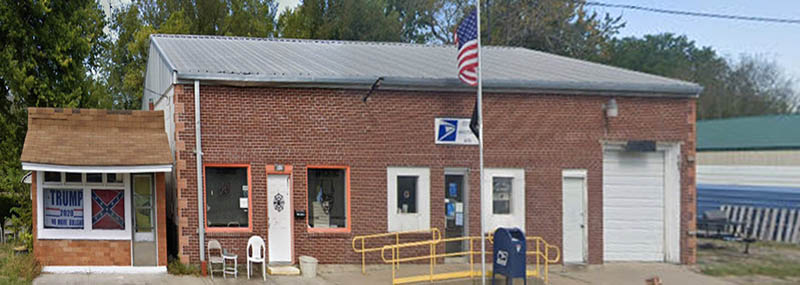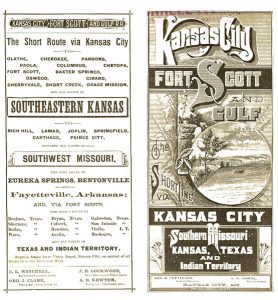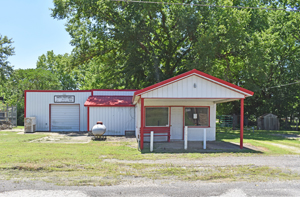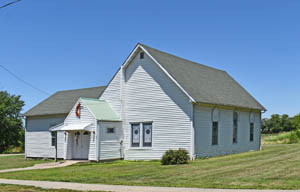Mapleton, Kansas, is a small town near the Little Osage River in the northern part of Bourbon County. As of the 2020 census, its population was 96.
This place was first settled in May 1857 by a company of men from New England under the direction of William Hutchinson, Reverend Morton, B. B. Newton, J. C. Burnett, E. P. Higby, S. W. Cheever, and D. Scott. Though a townsite was laid out by the company, it was not pre-empted or improved. After it was abandoned, a new company composed of Western men, consisting of Ellis Greenfield, William Baker, S.O. Himoe, A. Wilson, John Hawk, James Hoffnagle, and M. E. Hudson, formed the Eldora Town Company and pre-empted the same townsite. The company was organized by the election of E. Greenfield, President; William Baker, Treasurer; James Hoffnagle, Secretary.
When a post office was established on June 15, 1857, it was called Mapleton for a grove of maple trees near the original town site. The first postmaster was S.O. Himoe, who operated it in an office at his farm residence.
The first store, consisting of general stock, was opened in 1858 by Ellis Greenfield. In 1859, a mill was built on the Osage River, south of the town, and the company contributed toward its establishment. The mill was built and run by Mr. Jackson. The first-class custom mill later attached a sawmill.
Miss Mary Burnett taught the first school in 1858, and in 1859, a small log building was put up for a schoolhouse, and Mr. George Wilcox there taught a school. S. O. Himoe established a drug store the same year, which he soon afterward sold to E.P. Higby. The Masons organized Eldora Lodge, No. 28, composed of seven members, which grew to over 50 in the early 1880s and owned a large and spacious hall.
In 1861, the town’s name was officially changed to Mapleton, matching the post office’s name.
After the completion of the Kansas City, Fort Scott, and Gulf Railroad and the establishment of the village of nearby Fulton in 1869, much of the trade and business of Mapleton was drawn to that point. However, a large and flourishing country trade still sustained Mapleton. In the early 1880s, it had a fine two-story stone school building, measuring 46′ x 24′, with two rooms for school purposes nine months of the year, with about 114 students attending.
In 1882, the Christian or Campbellite Society erected a handsome church building, and the Presbyterians contemplated building during the following year. At that time, Mapleton boasted three general stores, a drug store, a boot and shoe store, a blacksmith shop, a wagon shop, and a butcher shop.
Mapleton was incorporated on May 6, 1905.
In 1910, Mapleton had three general stores, a blacksmith and wagon shop, a money order post office, express and telegraph facilities, and a population of 275. At that time, it was on the Missouri Pacific Railroad.
The town’s population peaked in 1930 at 251. Afterward, the agricultural community gradually lost population in the following decades.
Notable people from Mapleton include Fred Burke, a prohibition-era gangster who was born and raised on a farm near Mapleton, and Charlotte O’Hara, a former member of the Kansas House of Representatives who was raised in Mapleton. Her brother Lynne Oharah was also a Kansas representative.
Today, the small town continues to operate a post office. The community is served by Uniontown USD 235 public school district.
It is about six miles west of Fulton and 19 miles northwest of Fort Scott.
©Kathy Alexander/Legends of Kansas, June 2024.
Also See:
Sources:
Blackmar, Frank W.; Kansas: A Cyclopedia of State History, Vol I; Standard Publishing Company, Chicago, IL 1912.
Cutler, William G; History of Kansas; A. T. Andreas, Chicago, IL, 1883.
Many Towns Have Disappeared, The Fort Scott Tribune. July 16, 1976. pp. 3C.
Wikipedia




